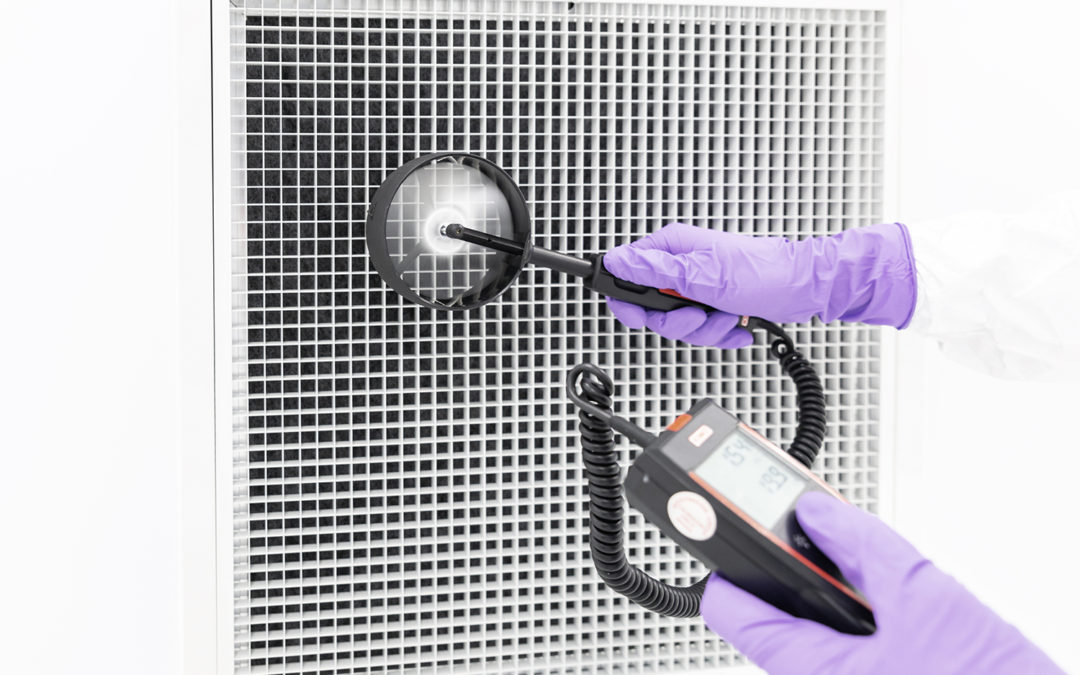At Angstrom Technology, we get asked a lot what the equivalent ISO class for a cGMP area is. Particularly from organizations at the start of a cleanroom project. Here, we answer that question for you.
The International Standard for cleanrooms and associated controlled environments is ISO 14644. To be classified as a cleanroom, zones must meet air cleanliness levels that are classified by particle concentration limits detailed in ISO 14644-1. While ISO 14644 governs all cleanrooms, the FDA Current Good Manufacturing Practice (cGMP) is specifically for medicines manufacturers. It describes the minimum standard they must meet in their production processes.
What are the different cGMP areas?
Two clean areas are of particular importance to sterile drug product quality in cGMP. These are the critical area and the supporting clean areas associated with it. Each area has a minimum recommended ISO class. Although, with ISO validation two particle sizes are usually considered, whereas cGMP standards dictate that only particles ≥ 0.5 μm should be controlled.
EU GMP takes a slightly different approach. Four grades (A-D) are detailed. Since each grade has particle concentration limits, there is an equivalent ISO class for each cGMP grade. Although they are not mentioned in cGMP guidance, these grades are becoming part of the common cGMP language in the US.
- EU GMP Grade A is approximately equivalent to ISO Class 5
- EU GMP Grade B is approximately equivalent to ISO Class 5
- EU GMP Grade C is approximately equivalent to ISO Class 7
- EU GMP Grade D is approximately equivalent to ISO Class 8
Need more information on the ISO particulate concentration limits? We have a table that breaks them down on our cleanroom classifications page.
What ISO Class Should Critical Areas Meet?
Critical areas must meet particle concentration limits according to ISO Class 5. These areas are equivalent to EU GMP grades A/B.
A critical area is one where the sterilized drug product is exposed to environmental conditions that must maintain product sterility. Activities conducted in such areas include aseptic processes. This can include manipulations of sterile materials before and during filling and closing operations.
Because an exposed product is vulnerable to contamination and will not be subsequently sterilized in its immediate container, this area is critical.
What ISO Class Should Supporting Clean Areas Meet?
Supporting clean areas must meet a minimum of ISO 7 (equivalent to EU GMP grade C). Depending on the activity in these areas, manufacturers can also classify them as ISO 6 or maintain the entire aseptic filling room at ISO 5.
Supporting clean areas can have various classifications and functions. Many support areas function as zones in which nonsterile components, formulated products, in-process materials, equipment, and container/closures are prepared, held, or transferred. These environments are soundly designed when they minimize the level of particle contaminants in the final product and control the microbiological content (bioburden) of articles and components that are subsequently sterilized.
Build a cGMP-Compliant Cleanroom with Angstrom Technology
At Angstrom Technology, we’re proud to have delivered high-quality, high-performance cleanrooms across North America for over 30 years.
If you’re interested in building an ISO or GMP-compliant cleanroom in your facility, contact Angstrom’s Life Sciences group for information on how to get started.


